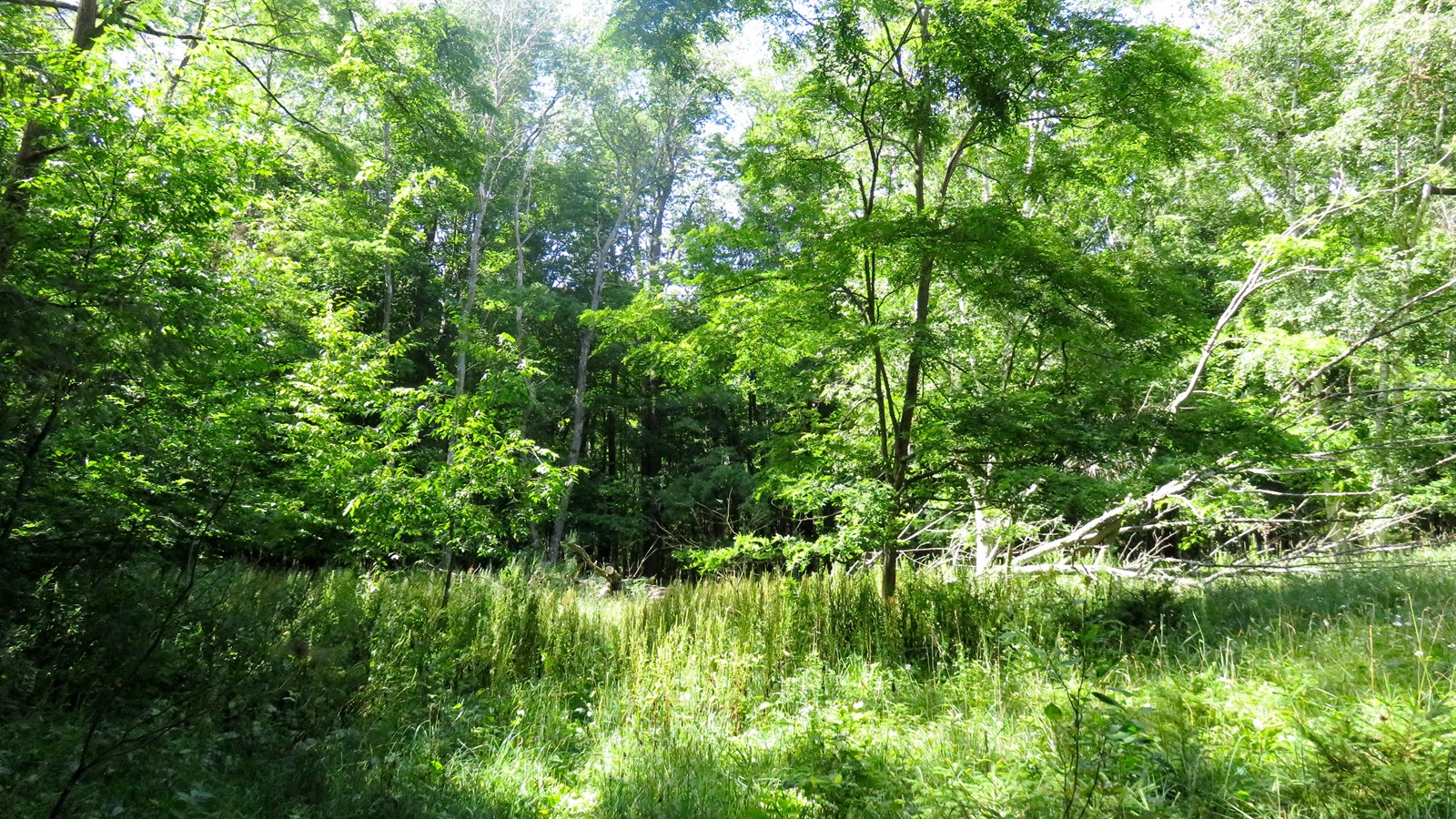Last updated: September 25, 2025
Place
Shauger Hill Trail

NPS credit
Toilet - Vault/Composting, Trailhead
Looking to stretch your legs after taking in the Pierce Stocking Scenic Drive? Check out the Shauger Hill Trail. It starts at the Scenic Drive's adjacent parking lot (just after turning off M109 and before the ranger booth) and loops through hilly, quiet woods. Shauger Hill doesn't access water or overlooks of Lake Michigan, but it's a shady escape on a hot summer day, and is especially beautiful in the fall. From the same trailhead, the Sleeping Bear Heritage Trail can also be accessed.
Pets are NOT allowed on the trail from December 1 to March 31.
Distance
Approximately 2.4 miles
Terrain
The trail, an easy loop taken in an overall clockwise direction without difficult uphill sections. The trail crosses the Pierce Stocking Scenic Drive (paved) twice and Shauger Hill Road (unpaved) twice.
Vegetation
The Shauger Hill trail winds through mature beech-maple hardwood forests with birches fluttering gracefully in the occasional clearing. In the clockwise direction, about .3 miles from the trailhead is a beautiful large stand of mature beech. Among the maples are a number of striped maples as well as the more commonly seen red and sugar maples.
Comments
A 1.5 mile hike along the unpaved Shauger Hill Road will lead you to a swim at North Bar Lake and Lake Michigan.
Shauger Hill's wildflowers are best in the spring before the forest canopy leafs over; look for the many black raspberry bushes lining the beginning of the trail. Pick a handful to enjoy along the way.
Skiing Shauger Hill
Skiers are advised to take the trail in reverse, starting from the ski trail sign at the parking lot. The downhill sections in the clockwise direction are advanced and steep and some have cut logs from trail clearings just off-trail around the bases of some of the hills.
First time hiking in the Lakeshore? Follow these tips
Take the Trail Trekker Challenge
Do you think you can hike all of the trails in one year? Want to explore the landscape of Sleeping Bear Dunes National Lakeshore, exercise, and have fun all at the same time? Join the Trail Trekker Challenge! Earn a prize and bragging rights by successfully completing each of the 13 mainland trails in the National Lakeshore. Hiking is a great way to get daily physical exercise and promote health while also discovering the beauty of the area. What better way to get your muscles warm, your heart pumping, and your senses savoring the views!
Pick up a copy of the Trail Trekker Challenge brochure/logbook at the visitor center in Empire.
